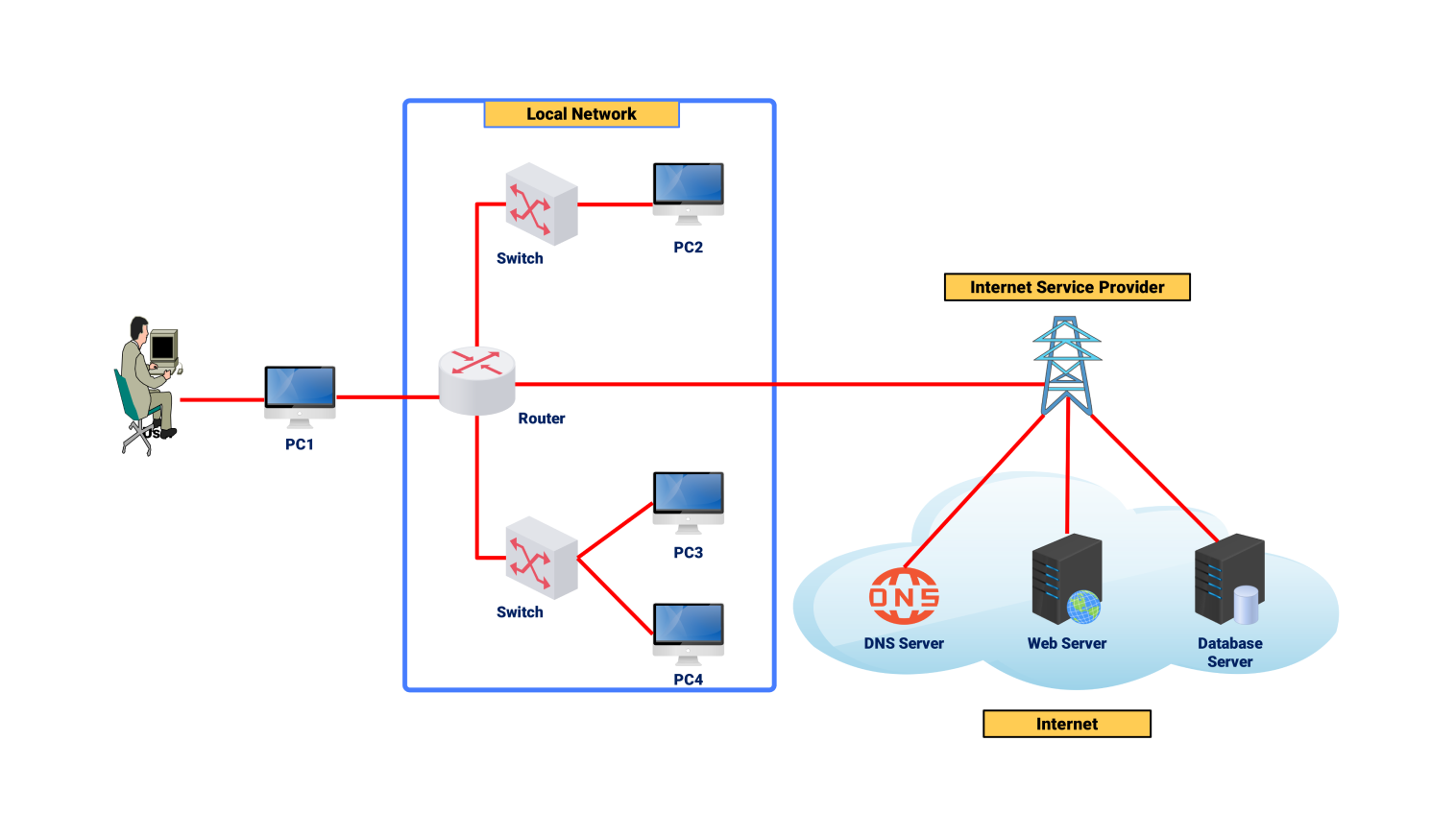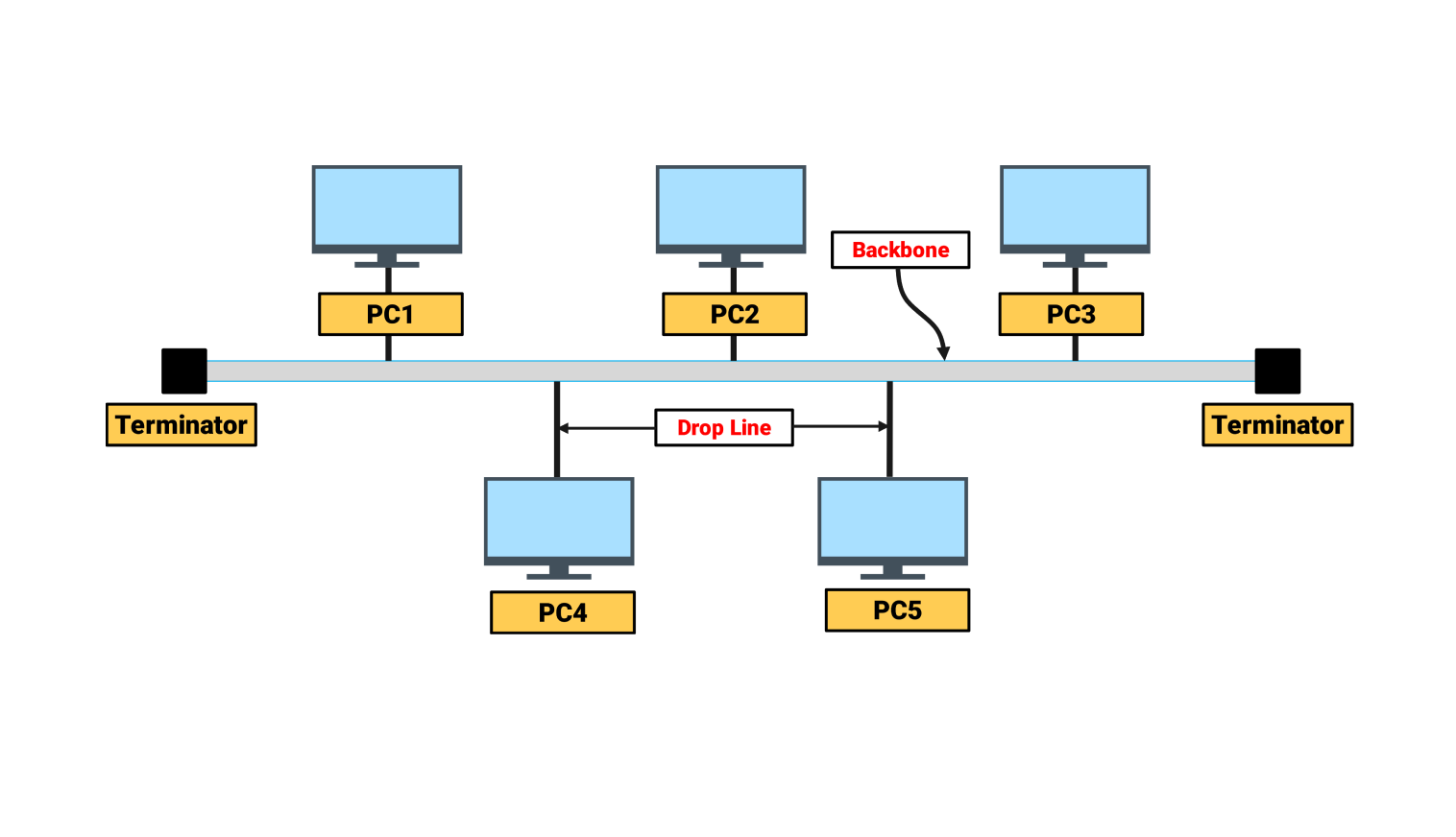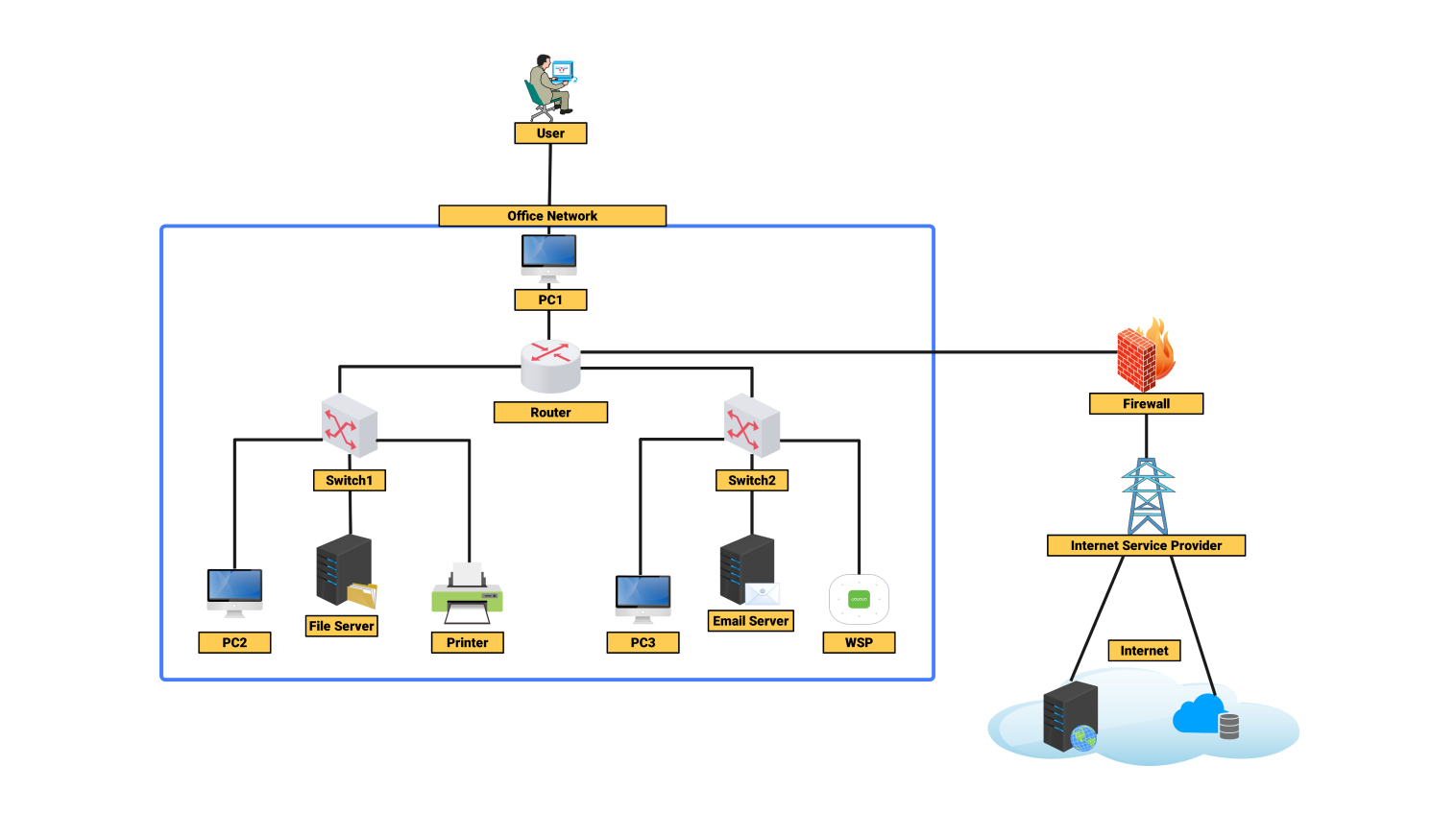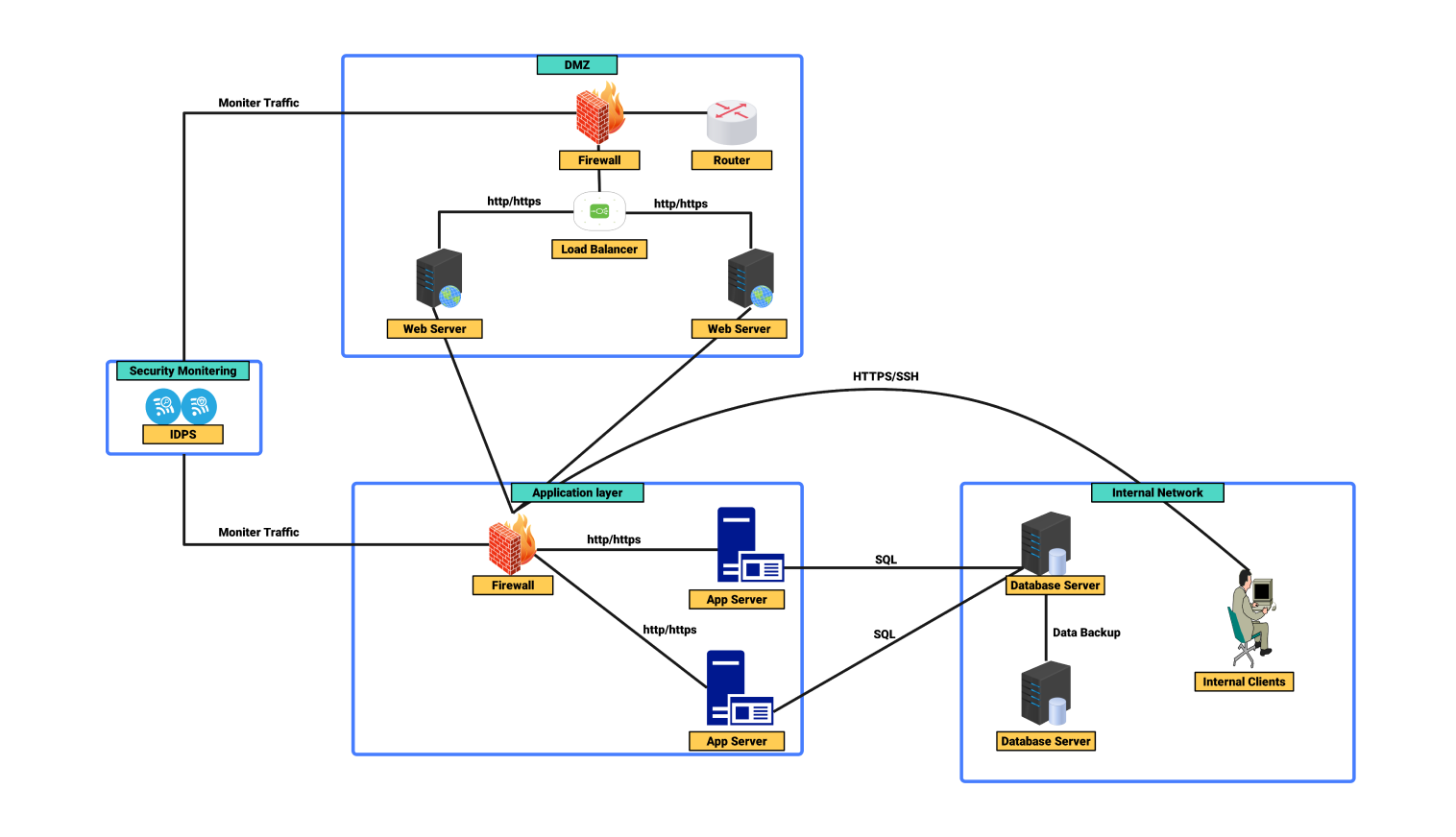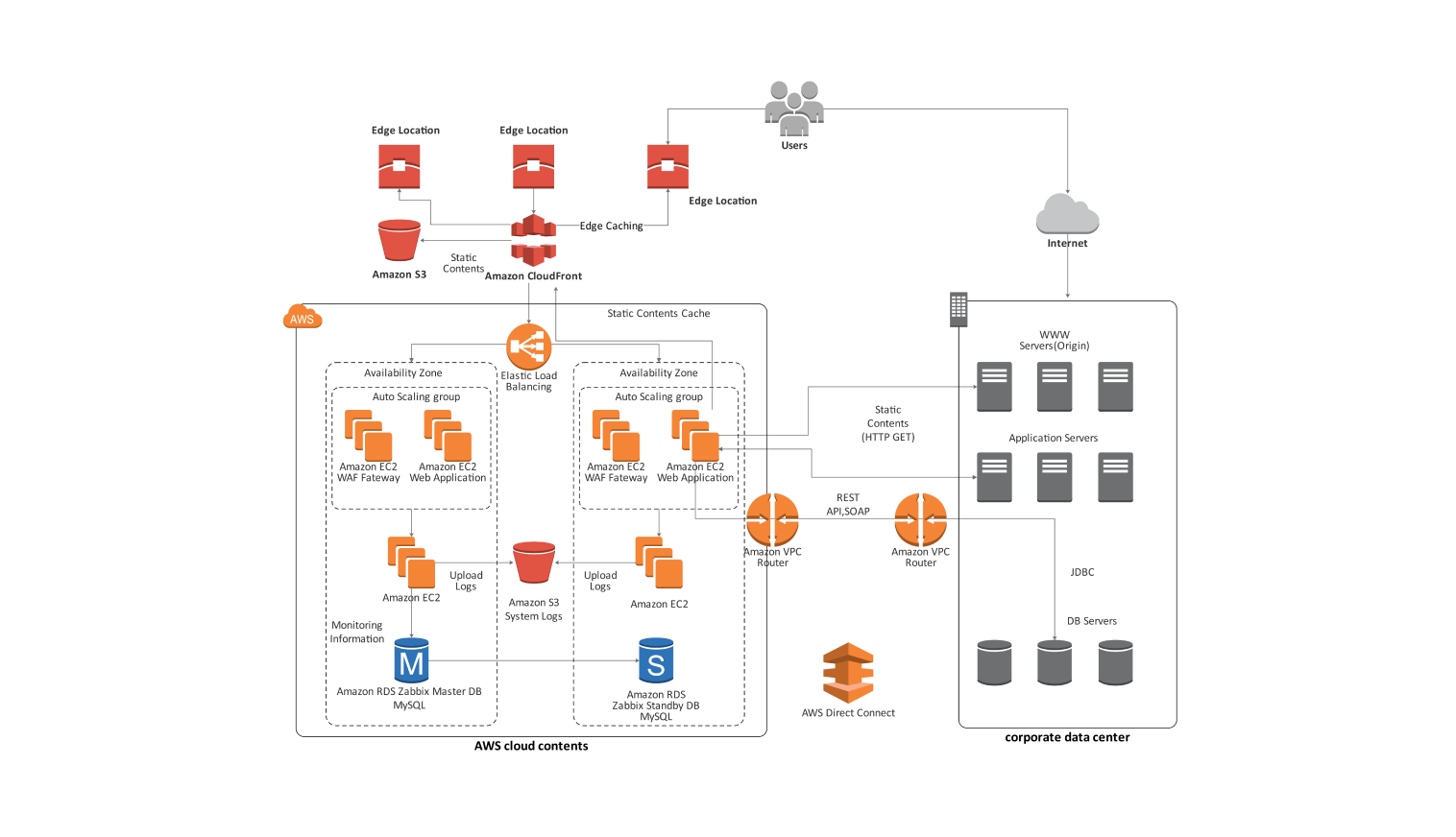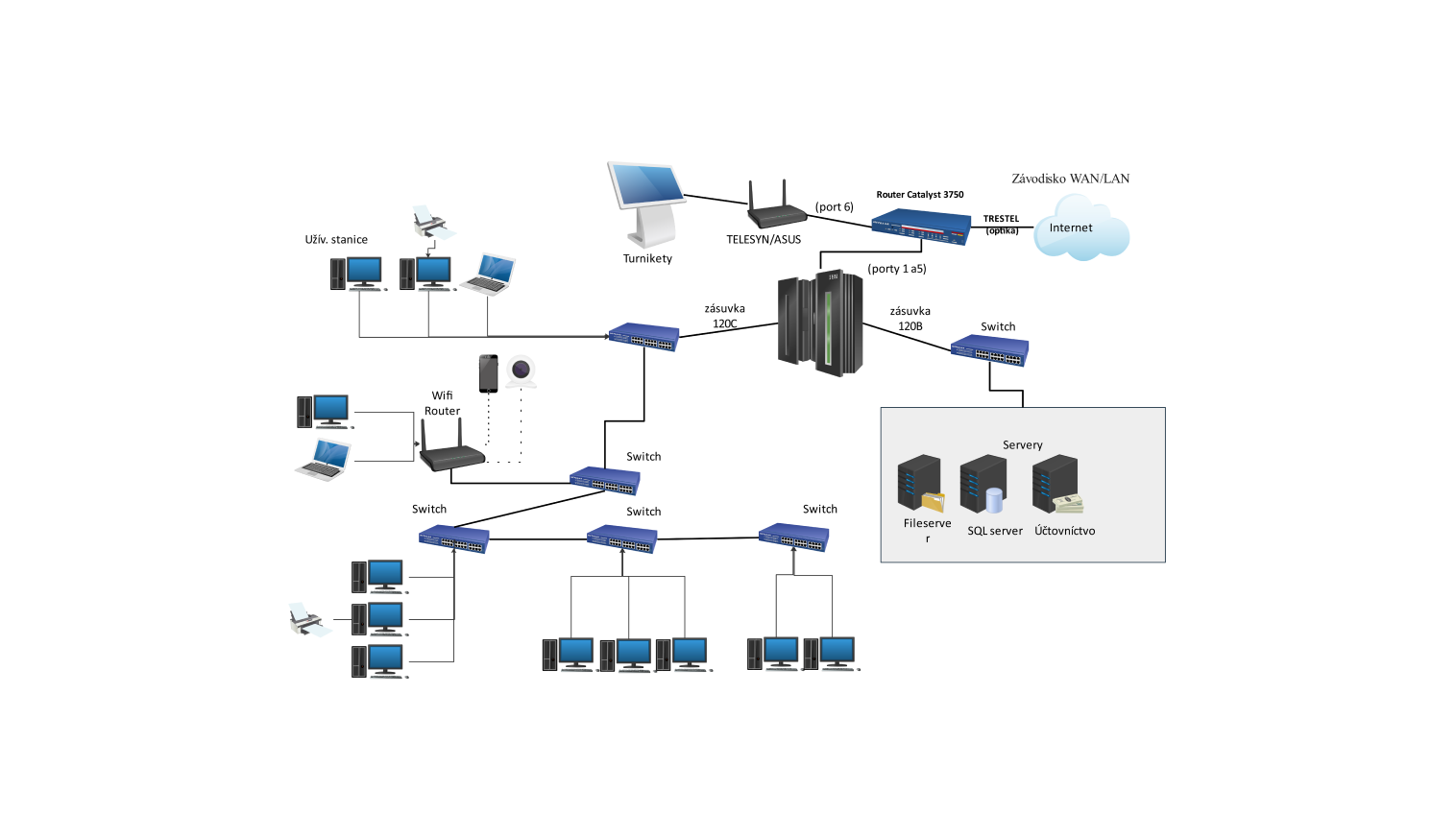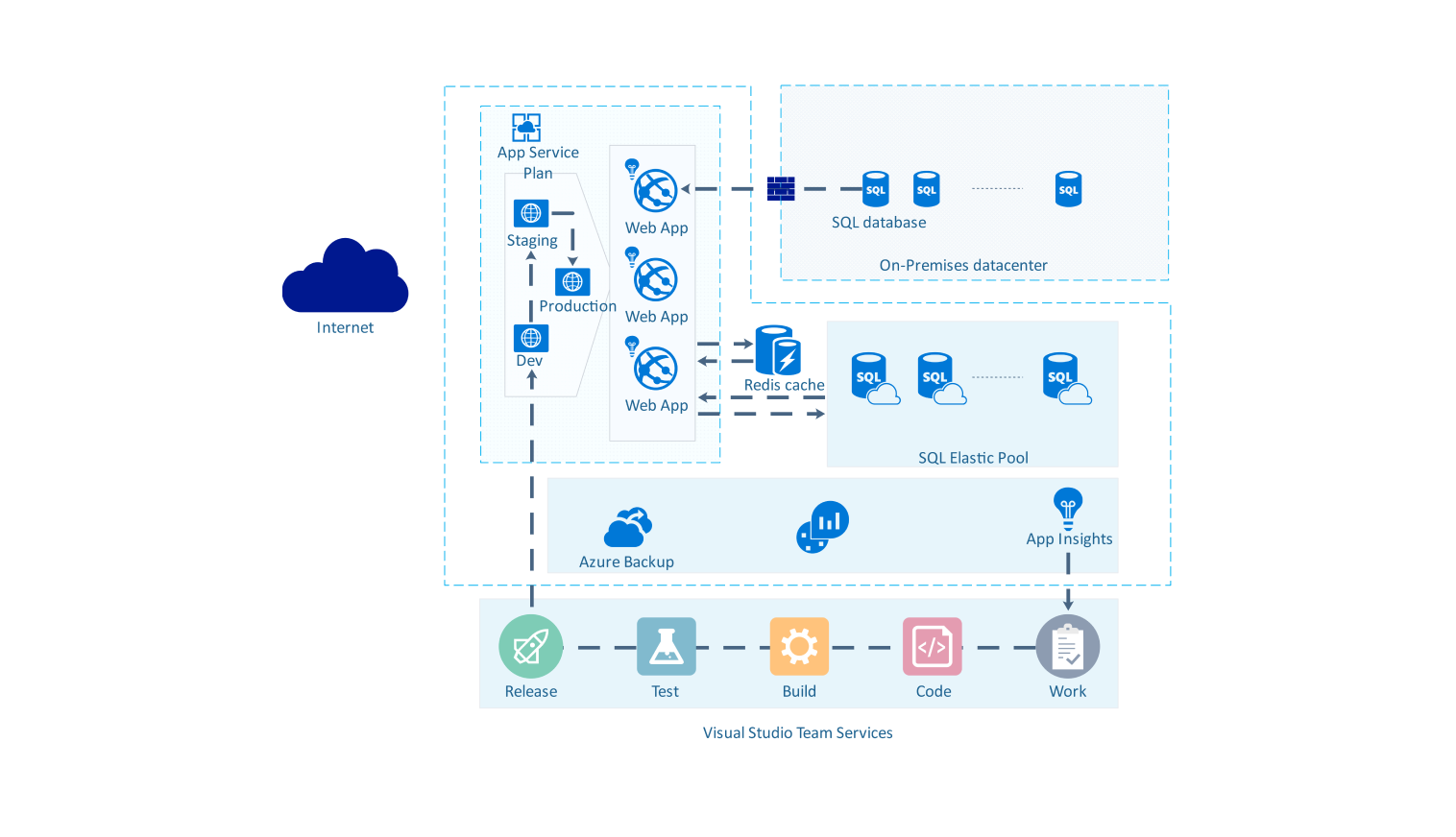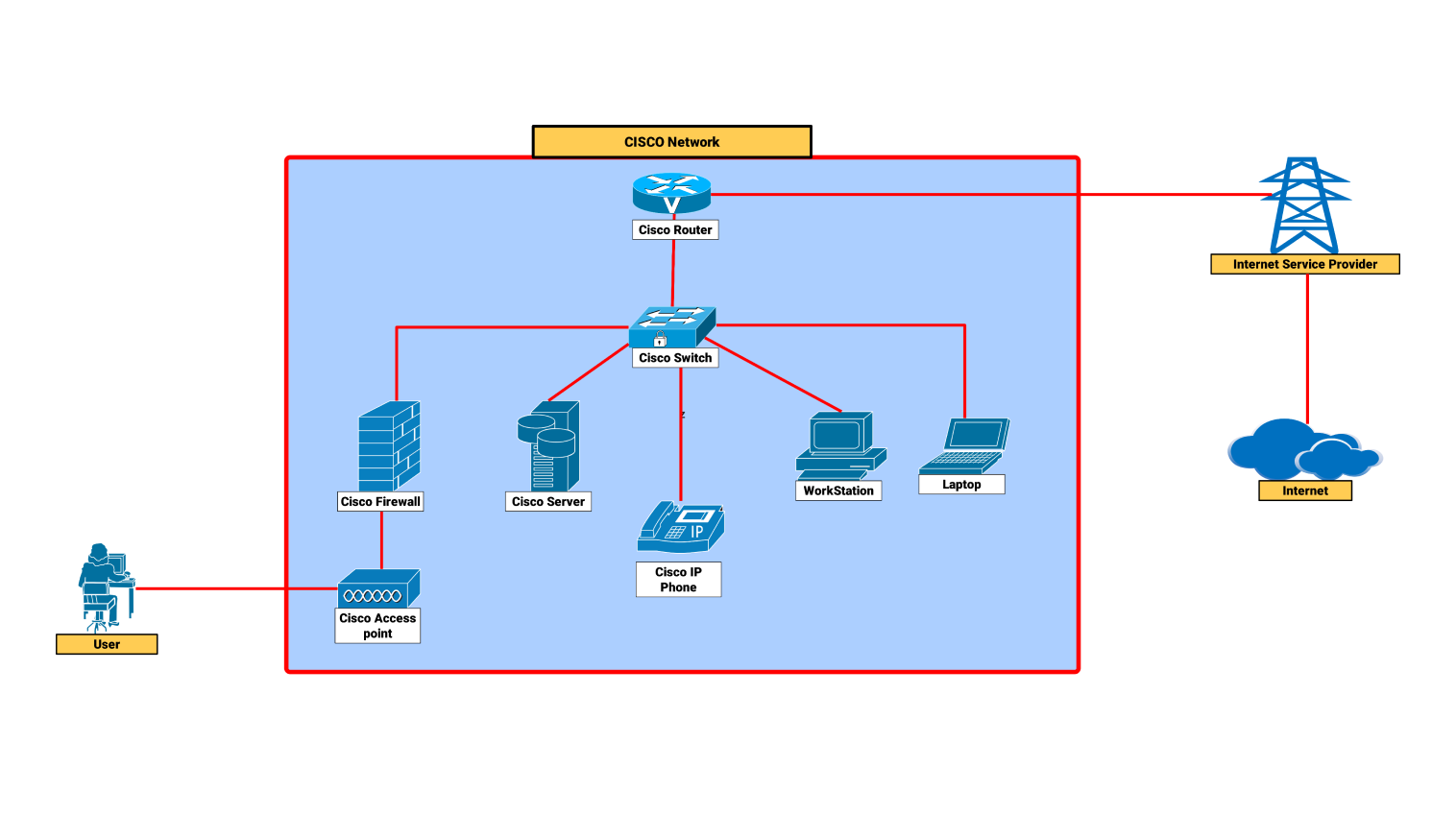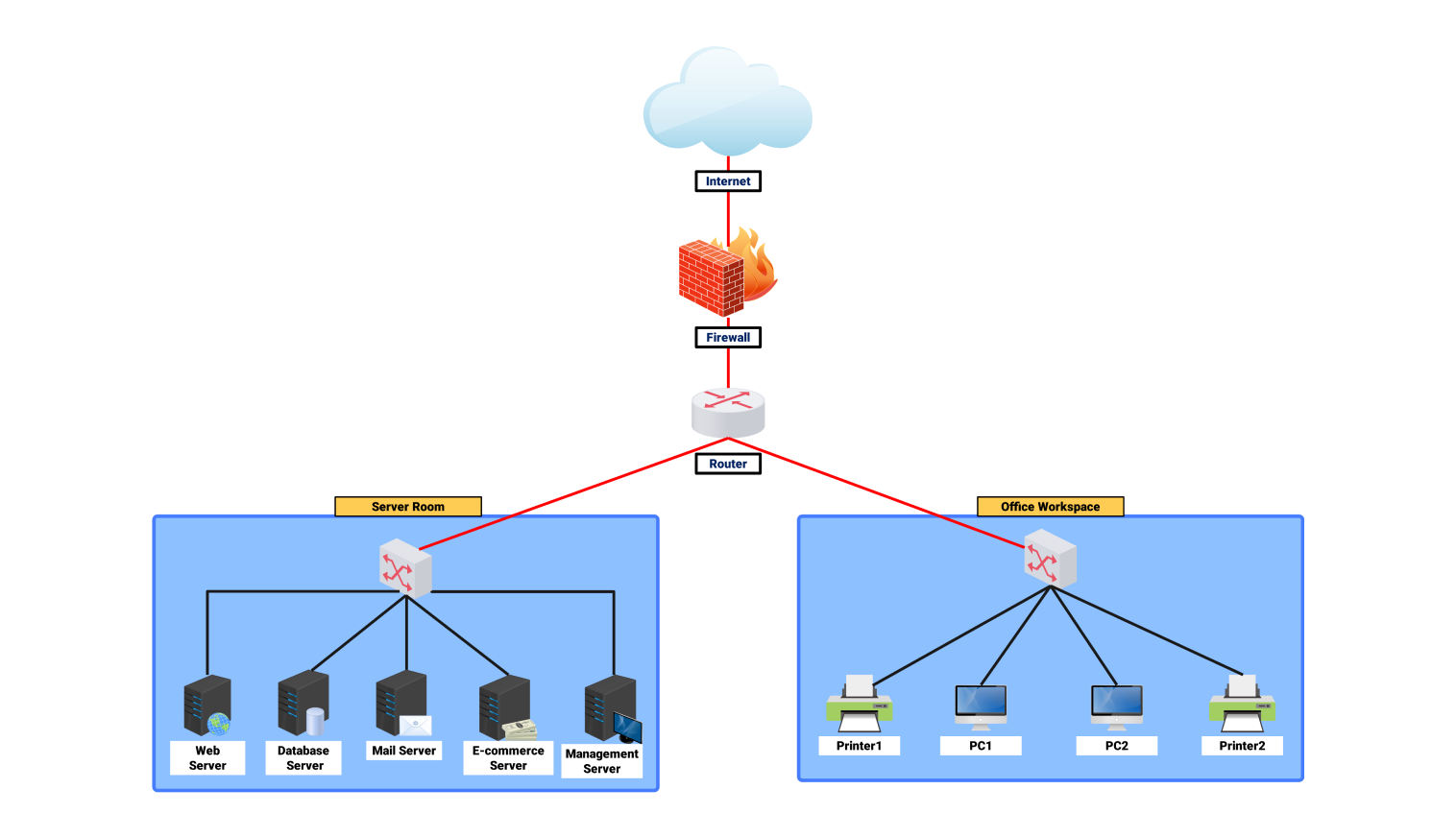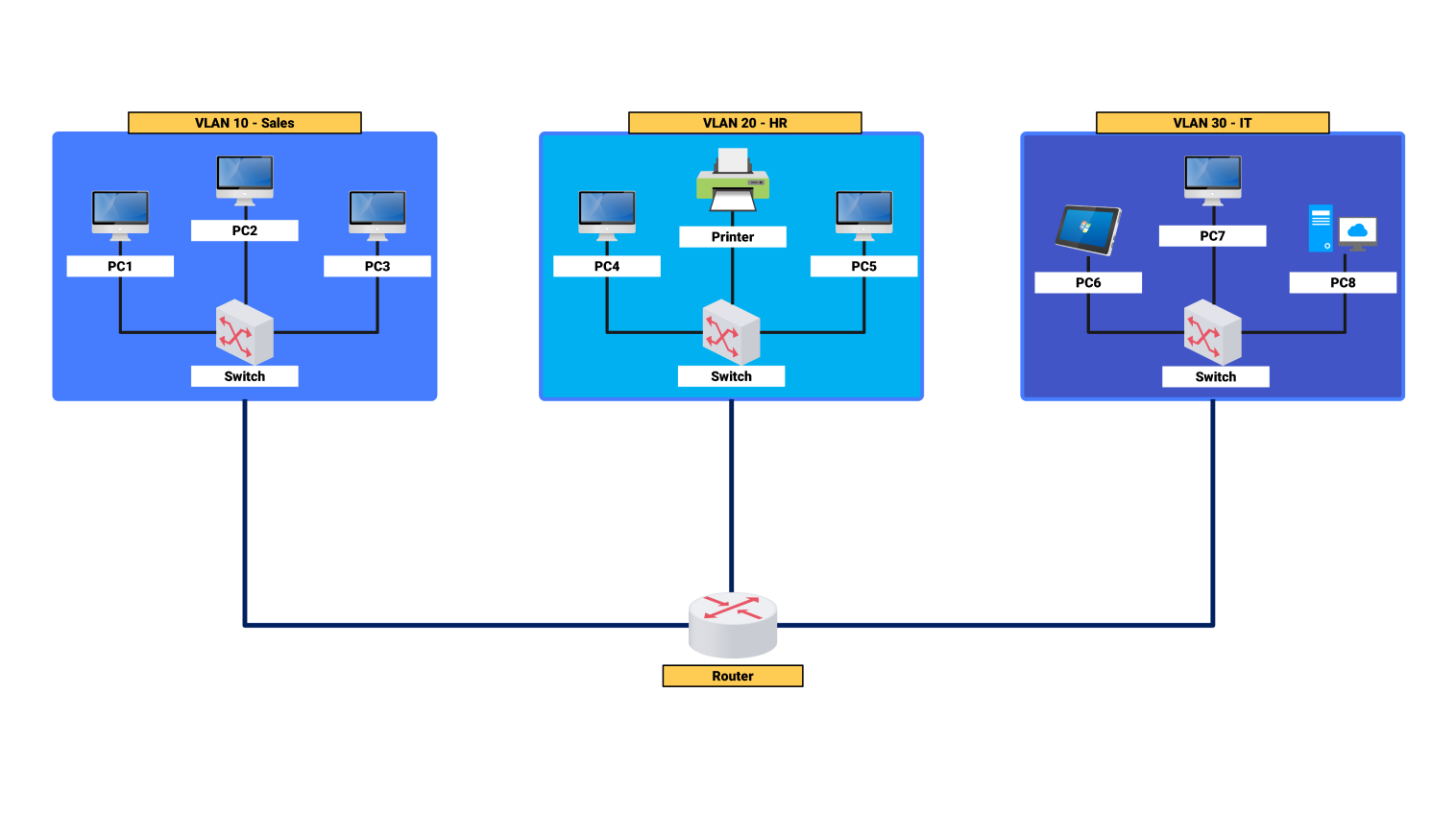- All templates
- Network diagram templates
- Network diagram internet
About this Internet network diagram
This network diagram shows an internet network arrangement. It specifically represents the link between a local network and the wider web employing an internet service provider (ISP). It shows the data flow from a user's computer to other network devices in the network before reaching the ISP’s internet servers.
The local network contains two switches and a router responsible for connecting multiple devices. The user in this diagram is represented by PC1 and connects to the router in the local network.
The router here serves as the internet's gateway. The switch connects more devices and user nodes such as PC2, PC3, and PC4. Thus, allowing for communication within the local network.
The router plays an important role and is responsible for controlling traffic between the local network and the internet. It directs data packets from the local network to external networks. This distribution ensures that the appropriate information reaches its intended location. This might be within the local network or across the internet.
Switches are used in local networks to connect many devices, such as computers and printers. This aids in allowing them to communicate more efficiently. The switch routes data to the suitable device in the network. It smooths the flow of information and reduces unimportant traffic.
The internet service provider's (ISP) major function is to establish a connection between the local network and the wider internet. The ISP is built on such an infrastructure that allows the local network to access a variety of online services.
The diagram represents that the ISP establishes the connection of the local network with multiple servers. These include DNS, web, and database servers. The conversion of domain names into relevant IP addresses is done by the DNS server.
This ability allows customers to access websites using easy-to-remember domain names rather than complex IP addresses. This server holds great importance for navigating the internet effectively.
The web server hosts websites and serves web pages to people who access them through their browsers. It communicates with the local network using the ISP, providing content according to users' requests.
The DB server contains and manages data for a variety of applications, including websites and online services. The web server and other services gain access to it for retrieval and updating of data when required.
Related templates
Get started with EdrawMax today
Create 210 types of diagrams online for free.
Draw a diagram free Draw a diagram free Draw a diagram free Draw a diagram free Draw a diagram free